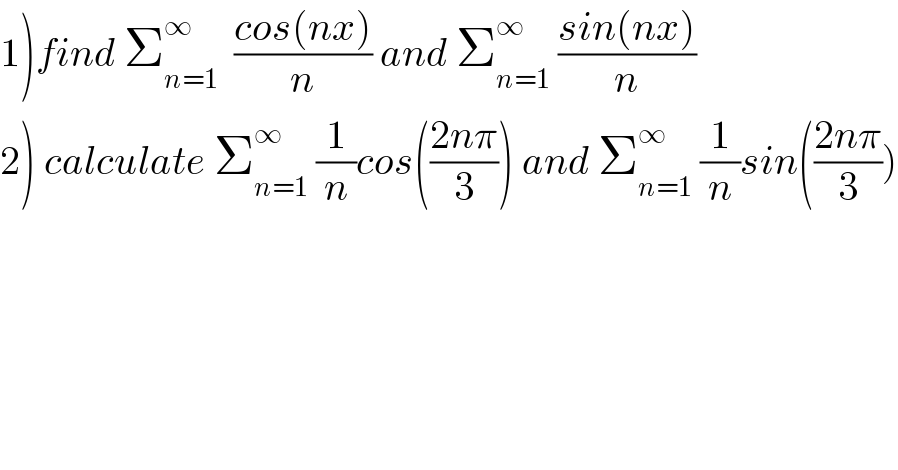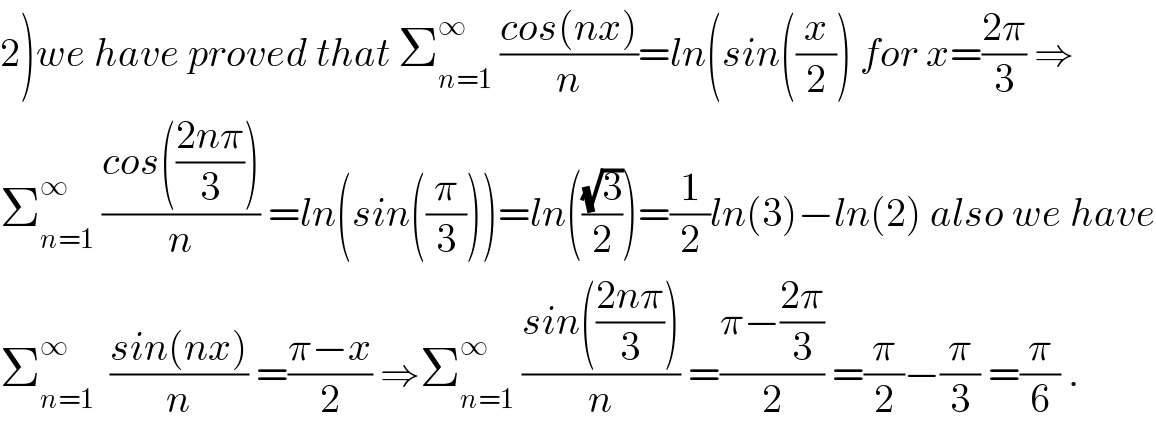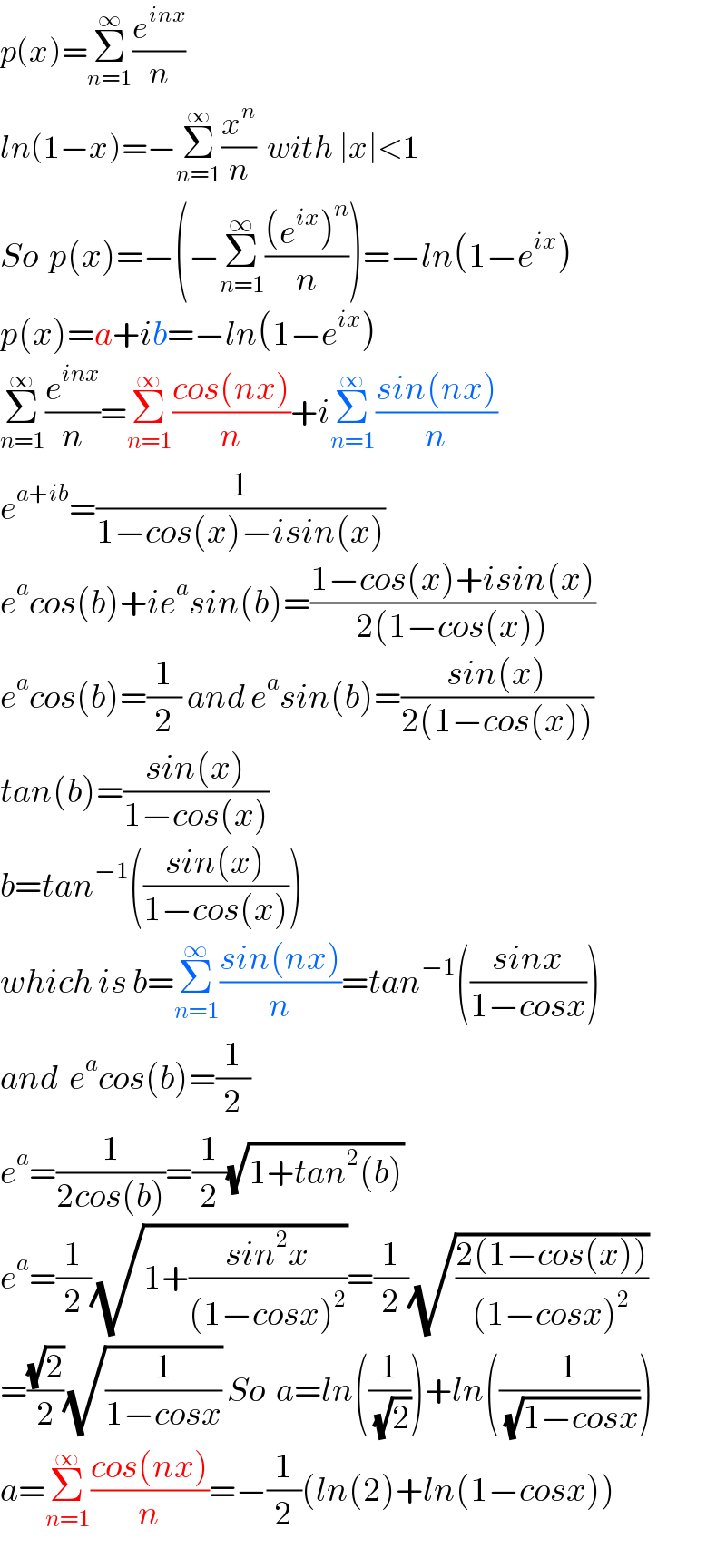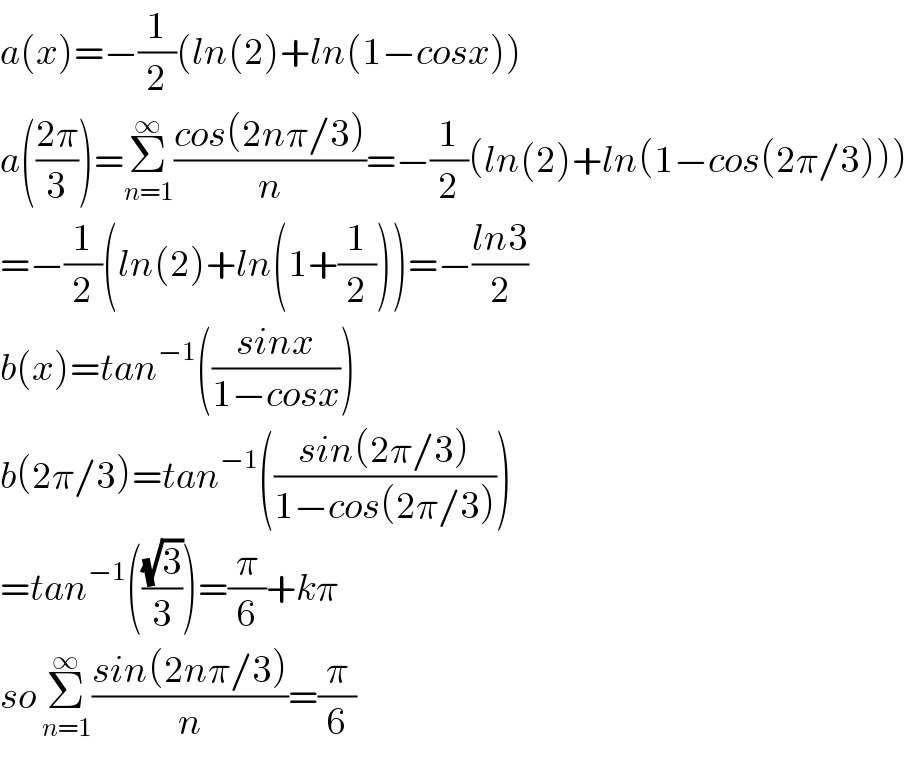
Question and Answers Forum
Previous in Relation and Functions Next in Relation and Functions
Question Number 45968 by maxmathsup by imad last updated on 19/Oct/18

Commented by maxmathsup by imad last updated on 23/Oct/18

Commented by maxmathsup by imad last updated on 23/Oct/18

Answered by Smail last updated on 22/Oct/18

Commented by Smail last updated on 22/Oct/18

